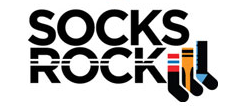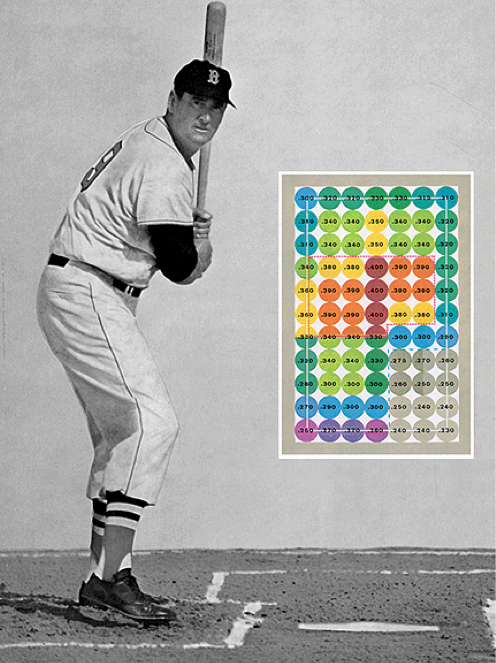How to Improve Your Baseball Batting Average January 24 2017

All sports critics have the same opinion that hitting a baseball is the hardest thing to do in sports. With 395 milliseconds to react, a baseball player has literally a fraction of a second to determine if it is going to be a ball or strike, make a decision to swing the bat or not, and then launch the swing to make contact with a ball approaching them at speeds exceeding 90mph. That’s a lot to do in less than 400 milliseconds.
Considering the complexity of the seemingly quick and simple baseball hit, it’s no wonder that .300 hitters are very rare even in the Big Leagues. From physical strength and natural ability to mental alertness and hitting skills, there are a number of factors that contribute to your batting average. While training is essential to improve your hitting skills, there are some other things as well that you must master in order get on base and increase your batting average.
Here’s a thorough review of some secret tips and tricks that will increase your chances of hitting a ball and help you become a member of the elite .300 hitters’ club.
6 Baseball Rules to Hit By
Ted Williams, the legendary baseball player who played for MLB for over 19 years and managed a batting average of .344, shares three hitting rules in his book ‘The Science of Hitting’. Abide by the rules and you are never to go hitless!
1. Get a Good Ball to Hit
Identify your happy areas and the spots that you must learn to lay off. Happy areas are the areas with high hitting average, while there are spots that offer a low hitting average. Ted Williams suggest that in order to improve their batting average, players must identify their happy zones and understand that they cannot hit a high ball as equally well as they can hit a low ball, or vice versa.
2. Do Your Homework
The second rule, according to Ted Williams, is 50 percent of effective hitting. Maximize batting practice, recognize pitchers’ rhythm, establish your own timing and rhythm, and study hitting charts. What’s more, in order to improve batting average, you need to do a bit more than studying the game situation or doing your research on the pitcher. You need to anticipate. For example, if a pitcher is throwing curves and fast balls, and only the latter are in the happy zone, you need to understand that you’d look silly not to go for a hit on a fast ball and look for curves.
3. Be Quick with the Bat
There is no question that a slow bat can drastically reduce your batting average. In order to hit the ball as quick and as far as possible, you need to find a good, quick bat. But the irony is that a quick bat does little to improve the batting average when the hitter does not have the skill and strength required to make a quick, long hit. Therefore, instead of relying on the bat head speed to cure your batting average, you need to work on the strength of your core muscles and your legs. Here are a few exercises that can help you gain more strength and make a powerful swing.

- Weighted Crunches — Three sets of 20 to 40 repetitions
- Hanging Leg Raises — Three sets of 10 to 25 repetitions
- Standing Weighted Twists — Three sets of 20 to 40 repetitions
- Grip-Specific Exercises, such as squeezing softballs, racquet balls, and tennis balls
- Wrist Curls and Reverse Wrist Curls
4. Achieve the Right Batting Stance
Each player has their own unique batting style. However, regardless of the style, the muscles involved in a baseball swing remain essentially the same. In order to become a more focused, confident, and productive hitter, a player must identify the right stance that allows them to condition the muscles involved in a baseball swing for improved speed and power.
Steve Springer, a former American baseball player, outlined a 5-step hitting philosophy in his book The Mental Game VIP. Following these 5 rules, you can improve your batting stance and become a more confident hitter.

Here are the five rules presented by Steve Springer.
- Slow Feet — In baseball, slow feet equal quick hands. Therefore, in the pre-swing phase, a hitter should keep his front foot slow and controlled to achieve the right stance required for a quick, controlled hit.
- Quiet Head — A quiet head makes for a loud bat. Therefore, in the launching phase of a swing, a hitter should keep their head as still as possible in order to keep eyes focused on the ball. While the shift in body weight is likely to cause vertical movement of the head, it should be limited to an inch or so.
- Quick Hands — While a good bat contributes a lot to hitting velocity, a good baseball player should have outstanding strength and quick hands in order to generate great power through quickness with the bat.
- Tall Backside — A weak backside leads to the inability of the hitter to properly transfer their weight forward and fully rotate their hips, which in turn results in a weak hit. Therefore, the hitter must work on shifting their weight backward in order to transfer energy into the ball.
- Stay Inside the Ball — To make a good hit, it is important that you allow the ball to travel deep into the hitting zone. To do so, you must keep your hands close to your body and drive them out towards to ball.
5. Avoid These Hitting Mistakes
There are several hitting faults that are very common among baseball players. Overcoming them can leave a significant impact on your batting average.
Mistake 1: Looking At Your Nose
Looking at your nose may cause you to lose your clarity and depth perception. Therefore, turn your head towards the pitcher and make sure that you have a clear and complete look of the pitcher.

Mistake 2: Poor Grip
Too tense or too loose grip can affect your bat control and reduce the bat head speed. Make sure you maintain a relaxed grip and hold the bat in your fingers away from the palms. This will offer better bat control and improve speed.
Mistake 3: Over striding
Over striding can make it difficult for you to track the ball. Therefore, take short strides of three to six inches only. Alternatively, you can do with no strides by lifting your front foot up and thumping it back down on the ground without losing the sight of the pitcher.
Mistake 4: Over-swinging
Trying to hit the ball too hard or pulling every pitch for a home run is a poor batting strategy. Not having a proper mental approach at the plate is the primary reason behind over-swinging. To execute the hit-and-run strategy property, a hitter must not over swing. Your priority should be to stay on top of the ball and make a solid, well-controlled swing.
6. Have the Right Baseball Equipment
Besides proper training and the right hitting strategy, the bat and other equipment you carry on the field also impact your batting average.

While there’s no single baseball bat that promises excellent results, you should choose a bat of the right weight, bat head speed, and other specifications according to your preferences, your physical strength, and hitting strategy. In addition to this, make sure that the uniform you wear offers you optimal comfort and protection. Use baseball stirrup socks to keep your feet cool and dry. When purchasing baseball stirrups, make sure that they offer you the right fit in order to stay comfortable on the pitch. Don’t forget essential protective gear, including face guards, cups, heart guard shirts, and supporters. A matching baseball cap will finish off your uniform!
Last but not the least, maintain a positive attitude. After all, the difference between batting .250 and .300 is only one more hit a week!
Whats another way to improve your hitting game? Baseball stirrups to match your uniform!









